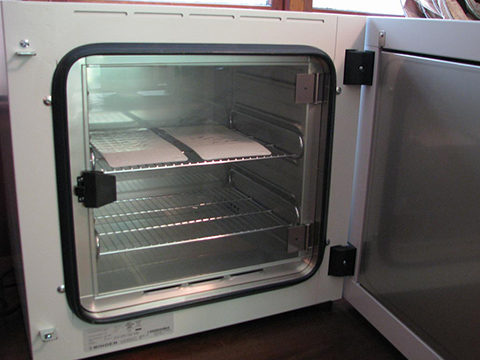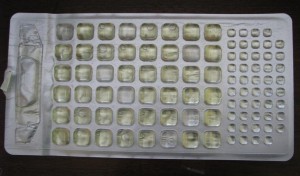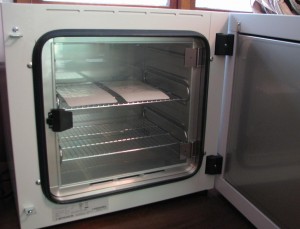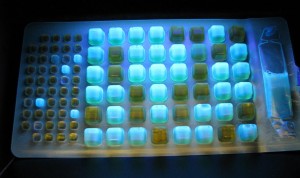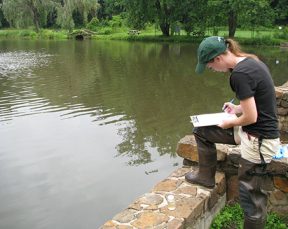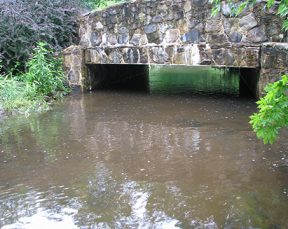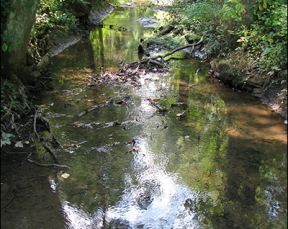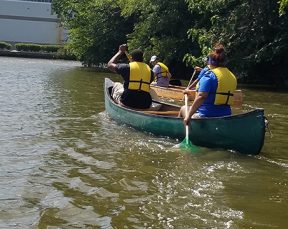I’m glad you asked! The main components of this summer’s E. coli monitoring program are our amazing volunteers and some new lab equipment. First off, there are 9 volunteers collecting water samples from 17 sites, and an additional 2 volunteers serving as “backups” in case a regular volunteer can’t collect from their sites. Every Tuesday since mid-July, volunteers head to their sites to collect water samples.
Because E. coli are naturally present in our guts, we want to avoid any contamination of the samples. Volunteers put on disposable gloves and spray them with rubbing alcohol to make sure that they don’t accidentally contaminate the sample. Samples are collected in sterile bottles so that the bottles don’t contaminate the results either.
Once collected, samples are put on ice until they are ready to be processed at the GSWA office. The ice ensures that any bacteria in the sample doesn’t grow in the meantime. Samples are processed within 6 hours of being collected, again to ensure that bacteria don’t have enough time to grow. All this work to keep bacteria from growing gives us the most accurate measurement of E. coli in the streams and ponds.
Processing the samples uses some neat new lab equipment and supplies, purchased this spring with generous grants from the Hyde and Watson Foundation and the Norcross Wildlife Foundation. The method, called Colilert, was developed by IDEXX and is EPA approved. It’s actually the same method that NJDEP and some water quality labs use to determine E. coli levels.
Each sample is mixed with a powdered substance that allows E. coli to create fluorescence (for you technical readers, visit https://www.idexx.com/water/products/colilert.html and click on the Science tab for more info on this process).
Once the sample and powder are mixed, they are poured into a special tray. The tray is fed through a sealer that works like a laminator and seals the tray backing on. The sealed tray is put into an incubator for 24 hours.
After incubation is done, the tray is removed from the incubator and held under a UV light to check for fluorescence. Any tray wells that fluoresce are positive for E. coli, and this number is proportional to the number of E. coli present in the sample.
We’re now 4 weeks into our 5 week program. Check out the updated results here!
If you’re interested in seeing any of the E. coli monitoring equipment up close, I’d be happy to show it off. Contact me at lkelm@greatswamp.org.
